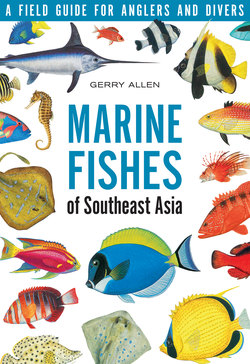Читать книгу Marine Fishes of South-East Asia - Gerry Allen - Страница 16
На сайте Литреса книга снята с продажи.
ОглавлениеSENDING SPECIMENS
TO THE MUSEUM
Although most of the specimens in the reference collections of the various museums around Australia and South-east Asia are collected on special expeditions by museum staff, occasionally valuable fishes are donated by the public. Also it may be desirable for people living far from their local museum to send specimens in for identification, particularly if the fish in question is suspected to represent a new record for the area or perhaps is very rare. Also members of the public may have the opportunity to collect fishes in remote areas that are not easily reached by museum scientists. For example, several years ago, a medical officer aboard an experimental offshore drilling platform obtained a valuable collection of deep reef fishes on Australia’s North West Shelf that were accidentally captured when the drill was brought up from 120 m depth. In this case none of the fishes were recognised by the crew which included several anglers. The specimens were wisely preserved and sent to the Western Australian Museum. Several species from this collection proved to be previously unknown to science.
Specimens can easily be sent to museums via parcel post if first properly preserved (see above section). They should be removed from the preserving solution, rinsed, and wrapped in moist cloth (cheesecloth is ideal) or newspaper, then sealed in several layers of plastic bags. The bags can then be posted in a well padded cardboard box. In Australia fishes can be sent to any of the following institutions depending on their state of origin: (1) Department of Ichthyology, Western Australian Museum, Francis Street, Perth, W.A. 6000, (2) Department of Ichthyology, Northern Territory Museum, P.O. Box 4646, Darwin, N.T.0801, and (3) Department of Ichthyology, Queensland Museum, P.O. Box 3300, South Brisbane, Qld. 4101.
